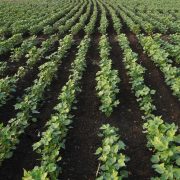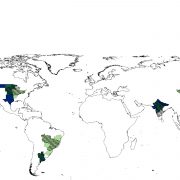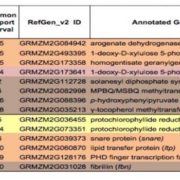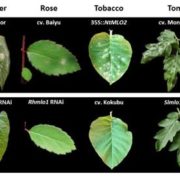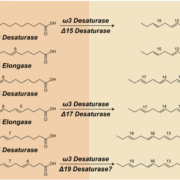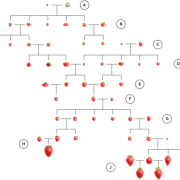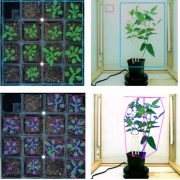Review: MYBs drive novel consumer traits in fruits and vegetables (Trends Plant Sci)
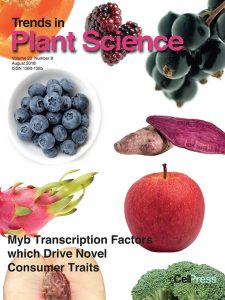 The MYB transcription factors, specifically the R2R3 family of MYBs, are closely associated with the regulation of anthocyanin biosynthesis. This easy-to-score trait made MYBs some of the earliest characterized plant transcription factors. Allan and Espley summarize the contributions of MYBs to pigmentation in flowers, fruits, leaves and even other organs (e.g., purple cauliflower). Because anthocyanins and related compounds have demonstrated health benefits, some of this knowledge is being used to increase their accumulation in food, for example in the flesh of fruits rather than only the skins. Furthermore, MYBs can also affect flavor, through for example production of tannins. Other roles for MYBs are also addressed; for example, the smooth-skinned nectarine differs from the fuzzy peach by a single MYB gene. This is an interesting and relatively accessible article that would be enjoyed by students. As the authors say, “MYBs are often the gene providing the ‘Wow Factor’. ” (Summary by Mary Williams) Trends Plant Sci. 10.1016/j.tplants.2018.06.001
The MYB transcription factors, specifically the R2R3 family of MYBs, are closely associated with the regulation of anthocyanin biosynthesis. This easy-to-score trait made MYBs some of the earliest characterized plant transcription factors. Allan and Espley summarize the contributions of MYBs to pigmentation in flowers, fruits, leaves and even other organs (e.g., purple cauliflower). Because anthocyanins and related compounds have demonstrated health benefits, some of this knowledge is being used to increase their accumulation in food, for example in the flesh of fruits rather than only the skins. Furthermore, MYBs can also affect flavor, through for example production of tannins. Other roles for MYBs are also addressed; for example, the smooth-skinned nectarine differs from the fuzzy peach by a single MYB gene. This is an interesting and relatively accessible article that would be enjoyed by students. As the authors say, “MYBs are often the gene providing the ‘Wow Factor’. ” (Summary by Mary Williams) Trends Plant Sci. 10.1016/j.tplants.2018.06.001



